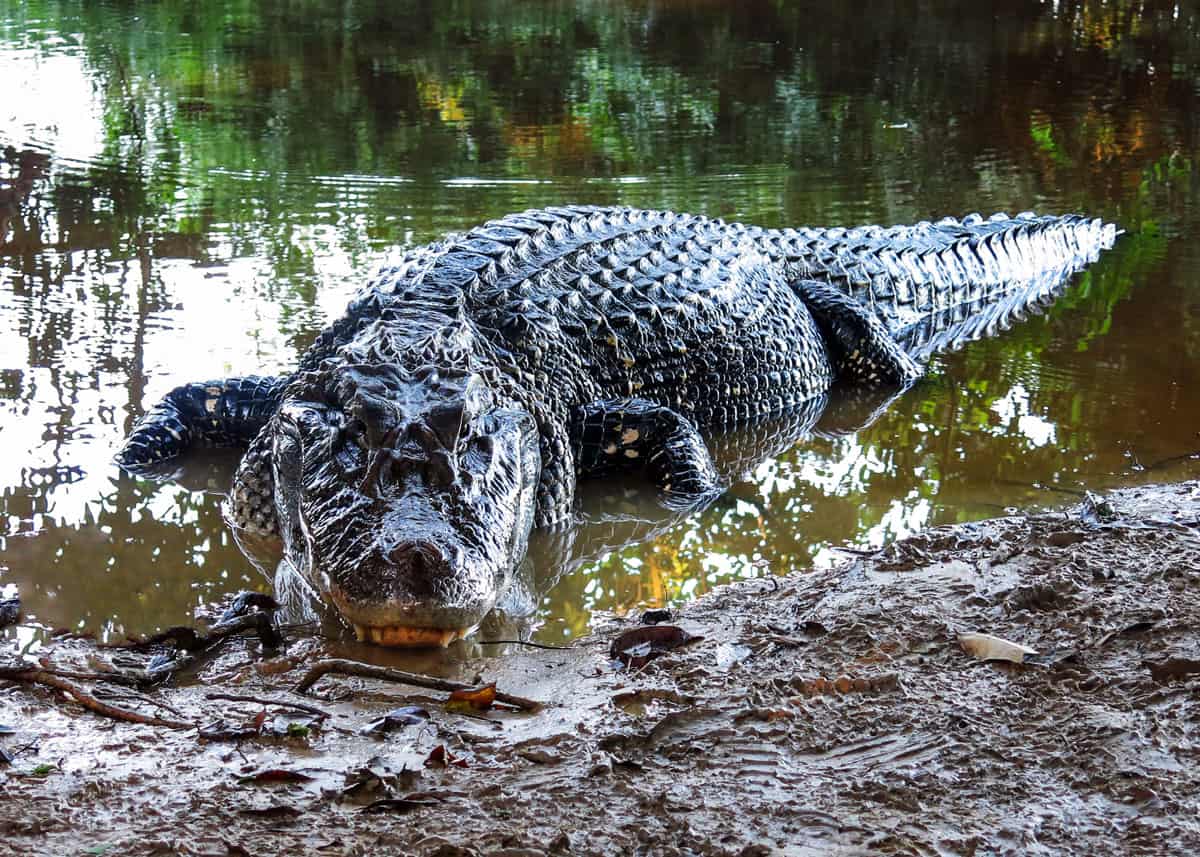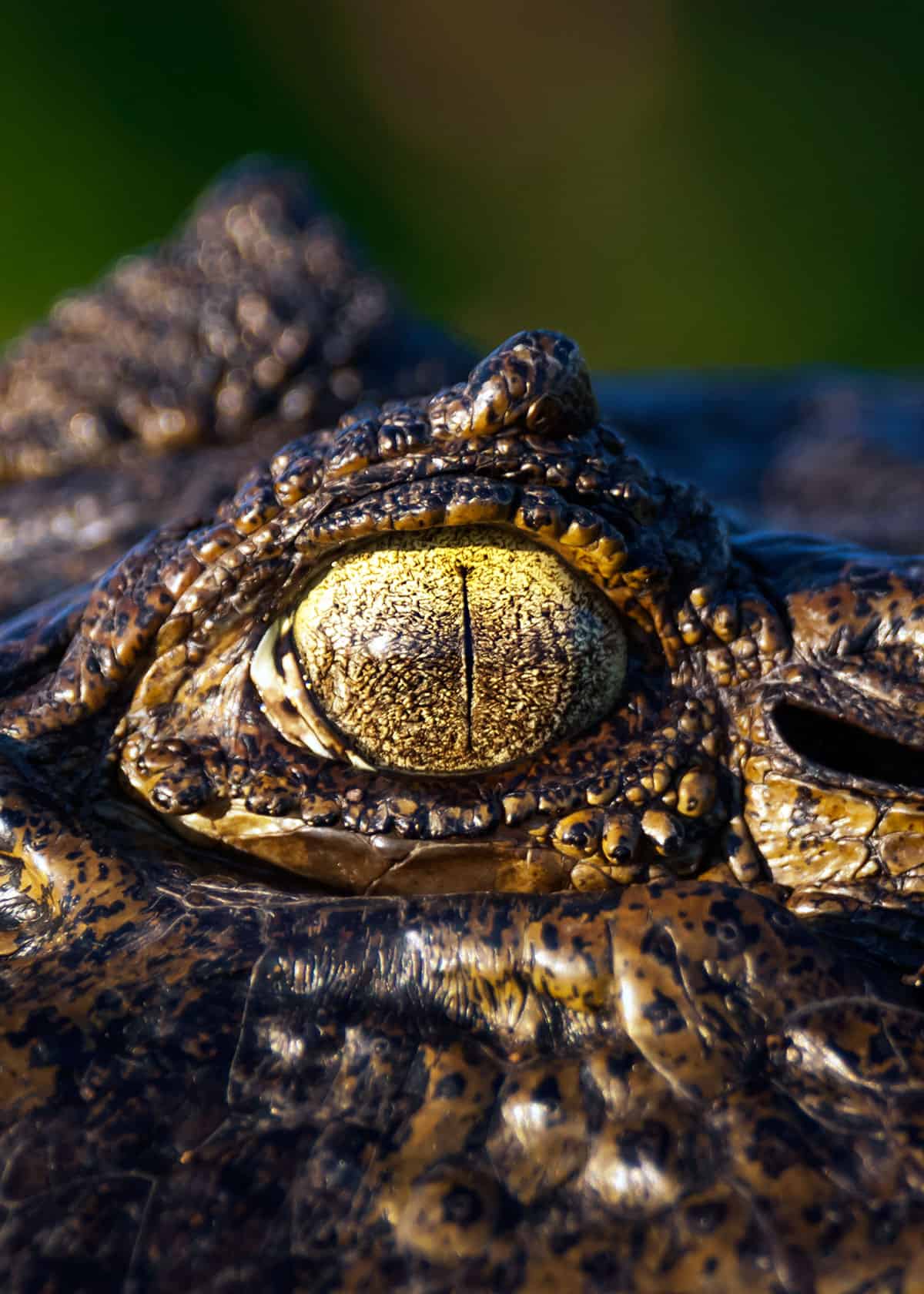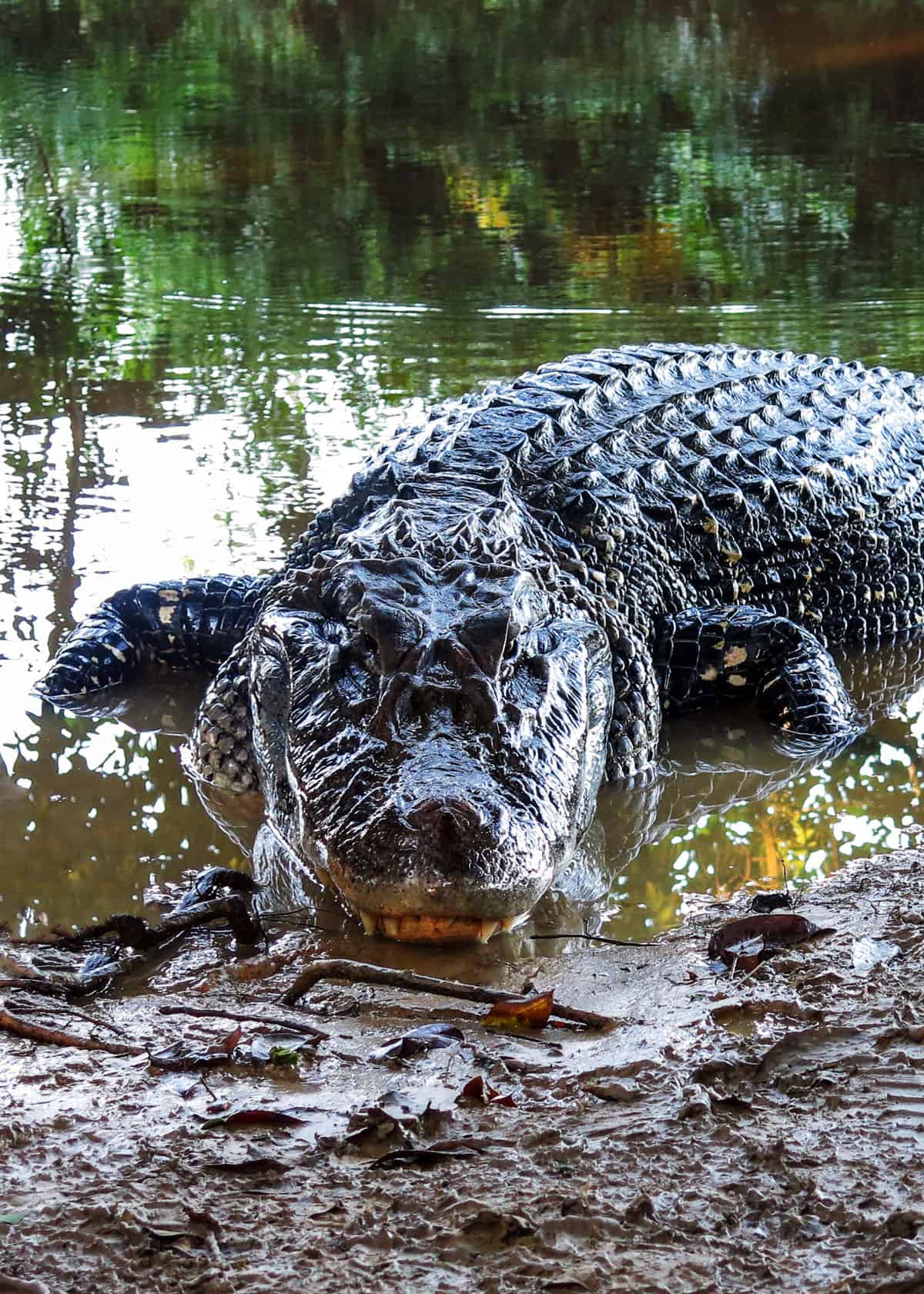Black caimans are fierce predators of Ecuador’s Amazon. In this post, you’ll learn all about them.

9 Black Caiman Facts
There are lots of animals in the Amazon, but these guys are in a class all their own.
Black caimans (melanosuchus niger) look similar to alligators and crocodiles. The family tree is quite intertwined, but according to recent research, the caiman is more similar to alligators than crocodiles. Keep reading to learn all about these beautiful beasts!
1. Black caimans are big animals
Black caimans are huge! They are the biggest in the caiman family, they reach up to 17 feet long, with females being slightly smaller than males and being about 10 feet long. Typically, they weigh around 800 lbs, but can get as big as 1000 lbs!
When they lay their clutches of up to 60 hard-shelled eggs, the eggs weigh up to 5 oz each (about the weight of a Major League baseball).
2. They love to be warm
Black caimans keep warm by basking in the sun and letting their dark scales soak up the sun. They will even stand with their mouths wide open as if saying “Ahhh… it feels so good!”
The dark water they swim in also helps them to soak up as much sun as possible.
3. You don’t want to get too close
While black caimans aren’t the most aggressive member of the crocodile, caiman, and alligator family, you shouldn’t try to touch one. These are wild animals, and they can be very territorial, especially if they have a nest and eggs nearby.

They don’t even have the same fear instincts as other animals, so if they want something, they just take it. Make sure you give them a respectful distance so they don’t decide they want you!
While you shouldn’t be terrified of these animals, they have been known to attack over 80 people in the last 20 years. Some injuries weren’t fatal, but many were.
So make sure you listen to your guide, be cautious, and give these kings the respectful wide berth they deserve.
4. They’re at the top of the food chain
Black caimans have no real predators in their native home. They are the apex. Even big cats, like jaguars and cougars, will avoid the lakes and swamps the black caimans call home.
Occasionally though, these kings do get overpowered. Some jaguars have taken them down, and giant river otter families have also killed caimans. Now, these otters must have a lot at stake to take on an animal like this!
5. They once faced extinction
Though they’re classified as “least concern” now, it wasn’t always that way. Black caimans used to be hunted and killed for their scales, which were used in fashion. Up to 99% of black caimans were killed.
Watch on YouTube
Fortunately for the black caiman, and animal lovers around the world, their numbers have been brought back up.
6. They have a diverse diet
As the apex predators that they are, black caimans aren’t afraid of a big meal. Their prey includes cattle, giant otters, horses, monkeys, pythons, boars, deer, armadillos, and pretty much anything else that is unfortunate enough to cross their path.
There have even been Amazon river dolphins found with large scars that suggest they’ve had an unfortunate encounter with these beasts.

And the bravery isn’t exclusive to fully grown caimans; young will even feed on piranhas.
Black caimans also don’t mind a little cannibalism, they will even eat their babies!
7. Their prey doesn’t see them coming
Black caiman are largely nocturnal and hunt at night. Because of the dark scales, dark water, and dark woods, it is incredibly difficult to spot this animal at night. By the time the prey sees the gleam of their highly specialized eyes, it’s too late.
8. They have a very strong bite
Although their bite hasn’t been officially measured, they can shatter a turtle’s shell with a single bite. So, safe to say their bite is extremely strong and not anything you would like to have chomped down on your hand!
9. Where does the black caiman live?
They live in the Amazon Basin, which means they live in Ecuador, Brazil, Bolivia, Peru, Guyana, Suriname, Venezuela, and Colombia. You can see them in Yasuni National Park.
Our Amazon Wildlife and Biodiversity tour takes you into the heart of the Amazon where you just might see a black caiman.
Related Tours

Amazon and Galapagos / natural wonders Copy
Explore the Amazon Rainforest and the Galapagos Islands, both considered Natural Wonders for the Humanity. Learn about the amazing biodiversity of the Amazon Rainforest and the complex relationship of local indigenous cultures.

Amazon and Galapagos / Natural wonders
Explore the Amazon Rainforest and the Galapagos Islands, both considered Natural Wonders for the Humanity. Learn about the amazing biodiversity of the Amazon Rainforest and the complex relationship of local indigenous cultures.

A Journey Along the Avenue of the Volcanoes
Duration: 5 Days / 4 nights
Program Overview
Enjoy a picturesque journey surrounded by Volcanoes, be marveled by its beauty and magnificent presence. Learn about the close relation developed between the Volcanos and the local indigenous communities that surround them. Learn how it is to live so peaceful surrounded by these unpredictable creations.
Price: $200

Mangroves and Tropical Ecosystems
Duration: 8 Days / 7 nights
Program Overview
Explore the tropical ecosystems of the Ecuadorian Coast, going from the Mangrove forests, one of the world’s most threatened tropical ecosystems, to one of the largest tropical dry forests remaining in the world at the Machalilla National Park.
Price: $200

The Andes Meets the Amazon Rainforest
Follow the transition between the highlands and the Amazon rainforest, exploring in the route differents ecosystems and climatic floors. You will be marveled by the amazing biodiversity of the route.
Ecuador Phone: (593) 2-3801125 / 2-3801149 Email: info@latinrootstravel.com Skype: latinrootstravel.ecuador Latin Roots Travel Av del Establo y Calle E, Centro Corporativo Financiero Site Center, Torre 3, Oficina 107, Quito – Ecuador
Powered by Auveron Studio


